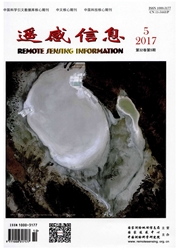

 中文摘要:
中文摘要:
随着遥感技术的飞速发展,利用遥感数据来进行水资源的监测、调查和分析已成为一种必然的趋势。从遥感影像中快速、准确地提取水体信息,是进行水资源调查和监测的一种重要的方法和手段。目前进行水体提取的方法有很多,本文选取了常用的3种水体提取方法,即单波段阈值法、基于阈值的多波段谱间关系法、基于阈值的水体指数法,然后分别选取典型的武汉平原地区和宜昌山地地区为研究区,以Landsat5TM影像为数据源,通过实验来比较和分析这3种水体提取方法分别在平原地区和山地地区的优势和不足。
 英文摘要:
英文摘要:
With the rapid development of remote sensing technology,using remote sensing data for water resources monitoring,investigation and analysis has become an inevitable trend.The fast and accurate extraction of water information from remote sensing imagery is an important method and means of the investigation and monitoring of water resources.Currently,there are many ways to extract water information from remote sensing imagery.This paper selected three common water extraction methods,that is the single-band threshold method,the multi-band spectral relationship method based on threshold and the normalized difference water index method based on threshold,then selected the typical plain area,Wuhan city,and the typical mountainous area,Yichang country,as experimental area,and then selected the Landsat5 TM image as research data to analyze and compare the strength and the weaknesses of three methods in the plain and mountainous area respectively by experiment.
 同期刊论文项目
同期刊论文项目
 同项目期刊论文
同项目期刊论文
 期刊信息
期刊信息
